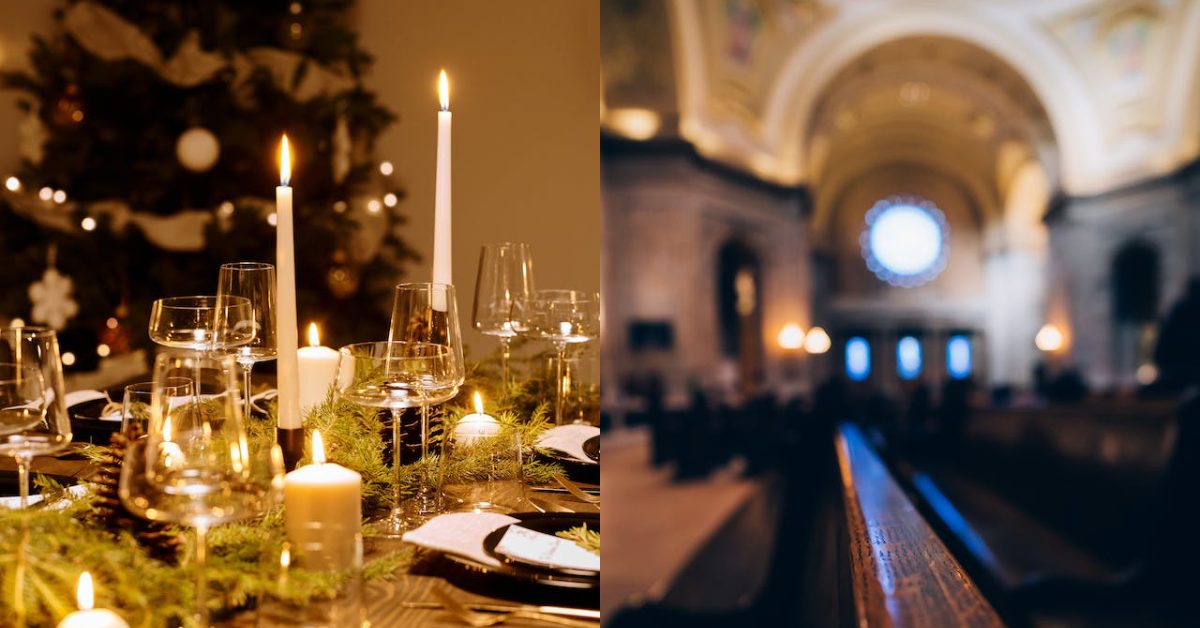(SPOT.ph) The Philippines, a country with a rich Catholic heritage, observes one of its most cherished traditions during the Christmas season: the Misa De Gallo and Simbang Gabi. These practices are not only religious but also deeply embedded in Filipino culture. This article explores the history, significance, and modern practices of Misa De Gallo and Simbang Gabi to provide a comprehensive understanding of these beloved Filipino traditions.
Also Read:
10 Things Pinoys Do During Simbang Gabi
The Hands That Craft Stars From Seashells
Knowing More About Misa De Gallo vs. Simbang Gabi
The tradition of midnight Mass on Christmas Eve was first recorded by Egeria, a Galician woman who went on a pilgrimage to the Holy Land around 381 AD. She described how early Christians in Jerusalem honored the Christmas mystery with a midnight vigil at Bethlehem, followed by a torchlight procession to Jerusalem.
Misa De Gallo and Role in Evangelization
During the reign of the Spaniards in the Philippines, Misa De Gallo, roughly translated as "Mass of the Rooster," was timed so that farmers and fishermen could fulfill their religious duties before starting their day's work. The flickering candlelight from parols, or Christmas lanterns, illuminated the path to churches for early risers. As such, Misa De Gallo served as an opportunity for missionaries to evangelize the Filipino people.
Strictly speaking, Misa De Gallo refers to the early morning masses traditionally held before dawn, while Simbang Gabi refers to the evening masses that have become more common in modern times.
The term Misa De Gallo has evolved to refer specifically to the final mass on Christmas Eve in most parts of the Philippines. This is also sometimes known as Misa De Aguinaldo.
The Papal Indult and Its Conditions
In 1953, the First Plenary Council of the Philippines petitioned Rome to continue the practice of Misa De Gallo. The Papal Indult was granted with conditions. It ensures that the masses are celebrated with solemnity and significant attendance. The conditions include celebrating the mass with solemnity, starting on December 16, and ensuring significant attendance of the faithful.
Interruption and Resumption of the Tradition
Despite its significance, the Misa De Gallo experienced an interruption from 1680 to 1689 due to a Vatican decree against vernacular singing during mass. However, after Archbishop Pardo's death, the tradition resumed.
Also Read: 10 Places for Puto Bumbong All Year Round
Simbang Gabi: The Evolution of a Tradition
Simbang Gabi now refers to the series of masses celebrated from December 16 to December 24. It usually takes part at dawn.
Initially, there were misconceptions about the term "anticipated Simbang Gabi," which is often used to describe masses before December 15 because "anticipated masses" usually apply to Sundays and Holy Days of Obligation. However, as time passed by, anticipated masses for Simbang Gabi were also enforced in the parishes.
The Liturgical Significance of Simbang Gabi
Simbang Gabi is a novena of masses leading up to Christmas Day. Like other novenas, it consists of nine days as a way to commemorate the number of days that the Virgin Mary and the Apostles prayed. It was said to be between the periods of Pentecost and Ascension.
In the Philippines, Simbang Gabi is associated with a nine-day novena procession. It also includes a reenactment of the search for lodgings by Joseph and the Virgin Mary, which is known as the Panunulúyan.
The Promise of Simbang Gabi
A folk belief states that completing all nine days of Simbang Gabi will lead to God granting a special request as part of the novena. If you think about it, Misa De Gallo and Simbang Gabi are more than religious observances. They are cultural pillars that reflect the Filipino spirit.
The Cultural Shift of Simbang Gabi
Over time, the social aspect of attending Simbang Gabi gained prominence. People began to see it as an opportunity to socialize and meet with family and friends, which led to a shift in the tradition's focus.
The Impact of Vatican II
The Second Vatican Council prompted a reevaluation of the original intentions of Misa De Gallo and Simbang Gabi. This led to a broader acceptance of this practice across the Philippines.
Over time, the tradition has evolved from a strictly religious observance to include social aspects, and the timing of the masses has shifted to accommodate more participants.



